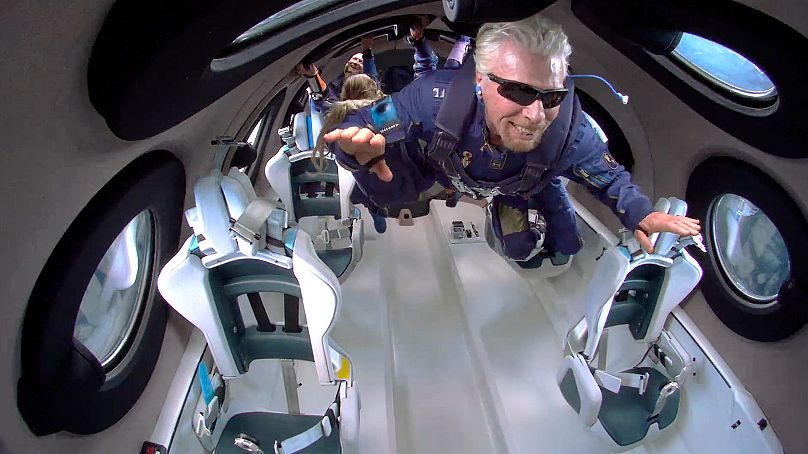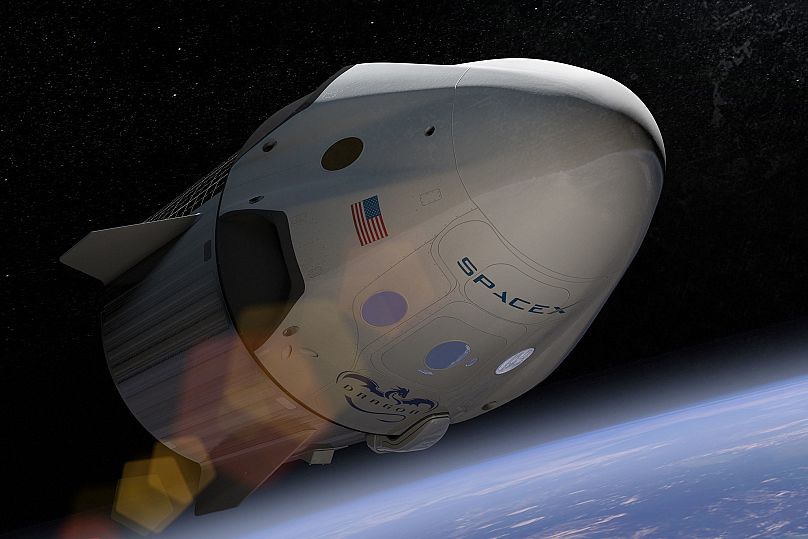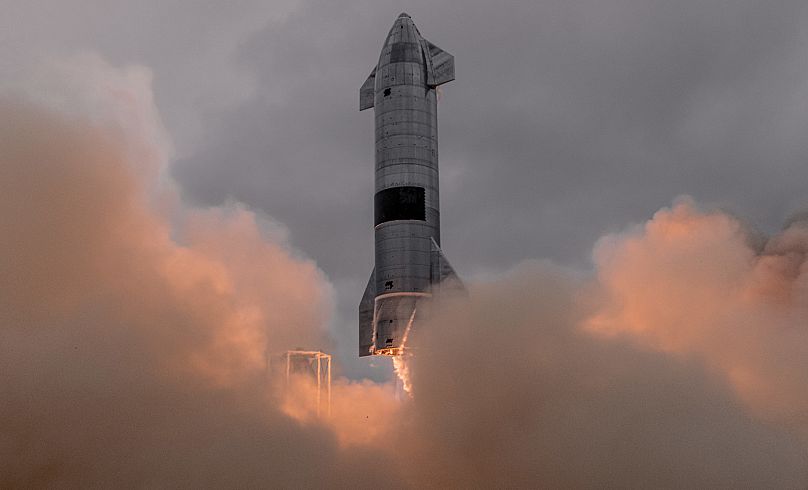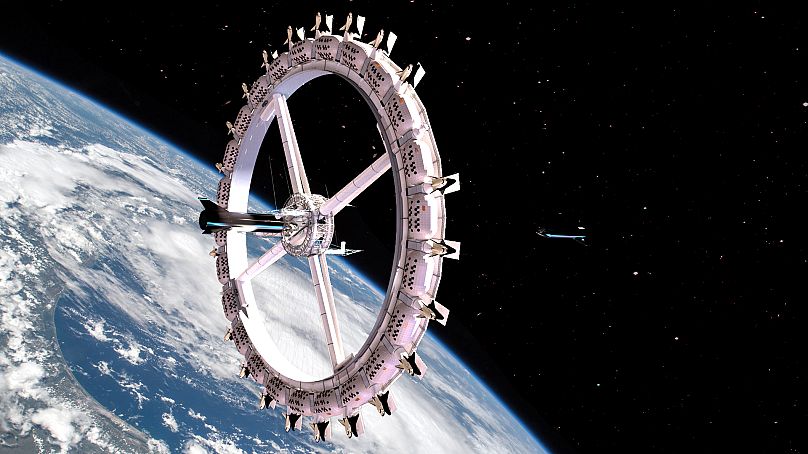At the beginning of his term, US President Donald Trump vowed to plant an American flag on Mars. He said on Monday, "We will continue the tradition of US ambition to reach beyond the Earth," "launching NASA astronauts to place the American flag on the planet Mars."
The comment drew a distinct thumbs-up from Tesla and SpaceX chief executive Elon Musk, who is notorious for his resolve to not only reach but also establish a human settlement on Mars.
Musk said, "Can you imagine how amazing it will be for American astronauts to set foot on another planet for the first time?"
But how close are we to sending someone to Mars, and what are the hopes for average citizens to travel to space?
Can we take a vacation to space?
It is a reality. In fact, the first space tourist embarked on his trip almost a quarter of a century ago, when Dennis Tito joined the Soyuz TM-32 mission in April 2001.
Since then, more than 60 tourists have journeyed into 'space', the majority of whom have undertaken suborbital excursions that kept them only briefly above the Earth's atmosphere before returning home.
However, there was no text provided. Please provide the text you would like me to paraphrase and I will respond accordingly.
But these flights aren't exactly reaching the moon. The Virgin Space Ship Unity travels to around 91,000 feet above the Earth's surface, which reaches the definition of space in NASA's book, defined as 80 kilometers above sea level. However, the Fédération Aéronautique Internationale (FAI) defines space as beginning at 328,000 feet.
The project features a reusable passenger rocket called the New Shepard, which has successfully conducted eight crewed space flights since 2021.
Spaceships capable of incredible feats, like the re-usable Falcon 9 launchers, which can guide themselves back to the launch pad, an astonishing spectacle.
Space travel is undertaken by its Crew Dragon spacecraft, a highly automated spaceship that is designed to be easily accessible to civilians with minimal training.
This spacecraft undoubtedly reaches orbit, developing missions such as docking with the International Space Station (ISS) and taking part in free-flying orbital excursions. A total of 15 crewed launches have been conducted, with 10 initiated by NASA and five undertaken for commercial purposes.
constellation, the founding ethos of the company was to make human life multi-planetary. Specifically, its goal is to colonise Mars.
Mankind's future will fork into two paths," Musk stated in 2016. "One option is to persist on Earth, culminating in a certain extinction event. Conversely, we can advance as a multi-planet community and a space-traveling society, a prospect I believe is the preferable course.
How will space travel become more accessible and commercialized in the future?
When it comes to making space tourism more accessible to a wider crowd, advancements in technology are proving to be the key factor. This development becoming more dynamicthanks to moves from influential figures such as President Trump and entrepreneur Elon Musk, who are helping to shape and accelerate the industry's growth.
There's a newfound trend of American support for space tourism," Dr. Annette Toivonen, expert in space tourism from Haaga-Helia University of Applied Sciences, commented to Euronews Travel. "This will bring both positive and negative consequences.
The technology will rapidly evolve due to the intent to keep space legislation to a bare minimum," she adds. "However, there are significant questions that require consideration, such as whether it is morally justifiable, and whether it is environmentally sustainable.
While some may view space travel as unsustainable due to continued development of propulsion systems and reusable launchers, Dr Toivonen nonetheless believes that sending billionaires into space has an environmental benefit.
When people travel in space and witness how delicate our planet is, and see this very thin layer of ozone, it's a sobering experience for them," she explained. "For some individuals, to see this with their own eyes and to realize how much we're polluting the planet, it can be a transformative experience for them.
When affluent and powerful individuals have such transformative experiences, the potential outcomes could be beneficial. “It’s a slightly unconventional perspective,” Toivonen notes, “but these individuals have the influence, financial resources, and clout to bring about meaningful change.”
Despite the challenges, she concedes that it's an awkward time to be a space exploration company. "Given the current state of the climate crisis and other pressing concerns, they need to convincingly demonstrate their relevance.
What is the feasibility of human flight to Mars?
The technology is not currently available," says Dr. Toivonen, "to implement it within the next four years. At the present time, it appears to be an unachievable mission.
Expenses play a significant role. The U.S. mission to the moon in 1969 had a cost of $25.8 billion, approximately €24.5 billion. Adjusted for modern-day values, the loss would be almost $320 billion, equivalent to approximately €300 billion. At the time, this was about 4% of the country's total federal budget, a crucial factor in our lack of subsequent moon landings.
Despite advances in technology and investments in finance, there are several key hurdles that currently prevent humans from exploring space effectively. "Cosmic radiation is one of the biggest challenges in space travel, particularly for long-duration missions to other planets, such as Mars.
"This area is very specialized, it will develop rapidly as an industry," says Chris Rees, postgraduate researcher at the University of Surrey, who recently published a report on the necessity for more warnings about cosmic radiation.
“With more flights taking place, a greater number of individuals could be exposed to cosmic radiation," he noted. "Regulators and industry stakeholders should collaborate to ensure public safety without obstructing progress with too many restrictions.”
Notwithstanding the potential obstacles, several companies are now laying the groundwork for human arrival on Mars. A notable example is Mars Base Camp, Lockheed Martin's plan to transport humans to Mars by approximately a decade's time.
“The goal is straightforward: sending humans to Mars is facilitated by a two-step journey, with a stopover on the Moon en route to a Mars-orbiting research facility,” states Lockheed Martin. “This orbiting base will allow astronauts to conduct on-the-spot scientific research, examine Martian rock and soil samples, and validate the most suitable location for a human landing on the Martian surface by the 2030s.”
As we journey to Mars, various companies are envisioning opportunities for us to stop over in the vastness of outer space, with several proposals for "space hotels" being floated.
Planned for operation within 60 months after funding is secured, with a capacity for up to 440 people, the Voyager Station will feature living quarters, gyms, restaurants, and even research pods for scientists.
Jeff Bezos is also investing in a project called Orbital Reef, a space station worth a staggering $100 billion (approximately €95 billion). It is designed to orbit the Earth, similar to the International Space Station (ISS), with a focus on tourism, luxury accommodations, and scientific research.
“Humanity's future is towards habitable space stations like Orbital Reef, where people can live and work freely, unencumbered by a dependence on a solitary planet,” Bezos informed NASA.
However, not all space tourism concepts have been especially productive. Dutch company Mars One sought to be the pioneer in landing humans on Mars and establishing a permanent settlement. Announced in 2012, it generated significant interest from individuals desiring to become astronauts, receiving 2,700 applications for the 24 available spots in the settlement program.
Regrettably, the company filed for bankruptcy in 2019, resulting in a loss of approximately one million euros for its investors.
Dr. Toivonen suggests that despite the lack of credible evidence for human presence on Mars in the near future, a surprise discovery cannot be ruled out.
“With President Trump's comments, the globe is now aware of our advancements in space. As I always say, there's that uncontrollable element 'X' that's always at play. It's possible that Musk has an advantage, something we're not aware of, that could catch us off guard at any time.”
Could a Mars space tourism industry generate sufficient interest and economic viability?
Currently, space tourism is limited to individuals with extremely high net worth, defined as people with a net worth of at least $30 million. There are approximately 626,619 people worldwide who fall into this category.
However, this could change in the future with advancing spaceflight technologies. Improved efficiency, reduced costs due to cheaper materials, and major technological breakthroughs are expected to bring down the costs, enabling space travel companies to lower their ticket prices.
Currently, Virgin Galactic offers plane tickets for sale priced between $250,000 and $500,000 per person, depending on the specific mission. SpaceX, on the other hand, has not publicly disclosed the pricing for its Blue Origin flights, although reports speculate it could be around $1 billion.
out of contention.
Research carried out by the Chicago Society for Space Studies determined that travelers returning from Mars holidays would need to stay on the planet until it had reached a suitable position for a return flight to Earth. The minimum and maximum durations for such a stay were estimated to be 112 days and 1,328 days, respectively.
Due to the time it takes to fly from Earth to Mars, the total journey would last at least 2.5 years, and possibly as long as five years. "The significant increase in overall travel time… will likely have a profound effect on the number of individuals willing to embark on a trip to Mars," researchers found.
Ultra-high net-worth individuals are high-maintenance individuals, and spending several years not only abroad but in space would likely be somewhat inconvenient. Even if they could spare the time, the living conditions on the Martian surface are unlikely to provide the luxuries to which they are accustomed.




Komentar
Posting Komentar